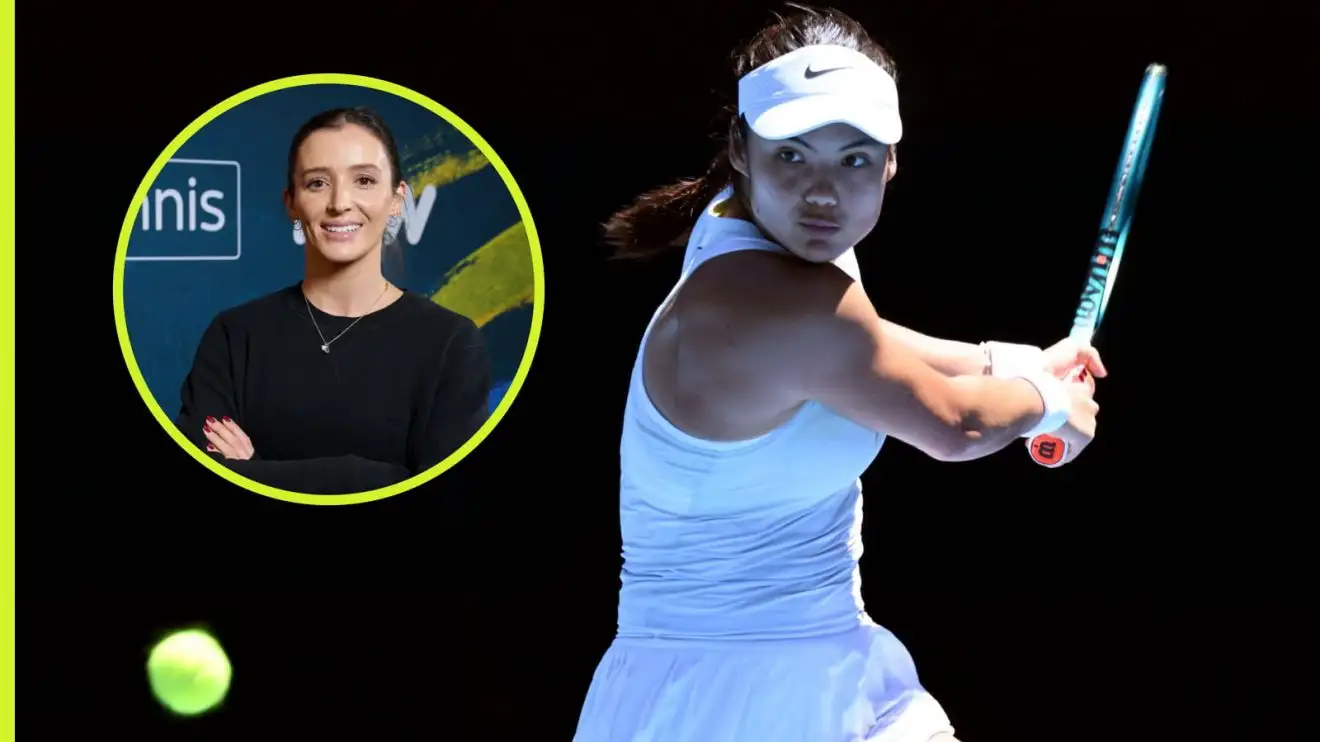
Emma Raducanu, the 22-year-old British tennis sensation, stands at a crossroads in her burgeoning career as she prepares for the 2025 clay court season. Known for her electrifying 2021 US Open victory, Raducanu has faced challenges adapting to the slower, grittier red dirt of clay courts. However, former British No. 1 Laura Robson is confident that Raducanu possesses the tools to thrive on this demanding surface, offering pointed advice to help the young star unlock her potential.
Raducanu’s relationship with clay has been complex. Last year, her clay court schedule was notably light, as she opted to skip the French Open qualifiers to focus on grass court preparations. While this decision led to some success on home soil, it highlighted her limited experience on clay—a surface that requires distinct movement, patience, and tactical acumen. “I think in the future, it’s going to be a surface that will actually really suit me,” Raducanu reflected during her Billie Jean King Cup appearance on clay last year, though she admitted, “maybe I’m a little bit away from that right now.” Her powerful groundstrokes, particularly her world-class two-handed backhand, seem tailor-made for clay’s slower pace, which allows for longer rallies and rewards spin-heavy shots. Yet, her movement on the slippery surface has been a sticking point, a challenge Robson attributes to Raducanu’s upbringing in Britain, where clay courts are scarce.
Robson, a former top-30 player and 2012 Olympic mixed doubles silver medalist, remains optimistic about Raducanu’s clay court prospects. She urges the young star to embrace the surface’s unique challenges, emphasizing its potential to elevate her game holistically. “Clay can enhance all areas of the game and develop crucial tactical skills,” Robson noted, highlighting how the surface forces players to construct points methodically and adapt to varying conditions. For Raducanu, whose aggressive baseline style thrives on hard and grass courts, mastering clay could add a new dimension to her versatility, making her a more complete player on the WTA tour.
The 2025 clay season looms large for Raducanu, with entries confirmed for the prestigious Madrid Open and Rome Open, and her current world ranking of No. 47 ensuring direct entry into the French Open at Roland Garros. These tournaments represent a golden opportunity to build on her 55.6% win rate on clay, which narrowly surpasses her 55.1% on hard courts but lags behind her stellar 61.1% on grass. Notable victories, such as her 2024 Billie Jean King Cup win over world No. 23 Caroline Garcia and a commanding performance against Linda Noskova in Stuttgart, underscore her potential. However, she has yet to secure a top-10 win on clay, with her two encounters against the formidable Iga Swiatek resulting in straight-set losses.
Raducanu’s recent decisions have sparked debate among tennis pundits. After a strong run to the Miami Open quarterfinals, her withdrawal from the Billie Jean King Cup finals and a WTA 250 event in Rouen raised eyebrows. Former world No. 1 Andy Roddick expressed frustration on his Served podcast, questioning her choice to “recalibrate” after finding top-10 form. “She looked great. She looked like a top 10 player in Miami. Why stop now?” Roddick asked, emphasizing the importance of maintaining momentum. He acknowledged that clay may not be her strongest surface but urged her to stick to a consistent strategy, particularly as she prepares for the grass season, where she excels.
Despite these critiques, Raducanu’s clay court journey is about long-term growth. Her 2024 Stuttgart performance, where she reached the quarterfinals by defeating Angelique Kerber and Noskova, showcased her ability to compete against high-caliber opponents on clay. Robson believes that with more matches, Raducanu can refine her movement and decision-making, crucial for success on the red dirt. “Madrid is always so different to Rome, and it might be that one set of conditions suits Emma better than the other,” Robson advised, suggesting that Raducanu experiment with spin and placement to exploit clay’s nuances.
As Raducanu gears up for the clay swing, the tennis world watches with bated breath. Can she overcome her discomfort on clay and silence skeptics, or will the surface’s demands prove too steep? With Robson’s guidance and her own resilience, Raducanu is poised to take significant strides, potentially transforming clay from a challenge into a strength. Her journey on the red dirt is not just about wins—it’s about building the physical and mental resilience needed to cement her status as a tennis elite.
Leave a Reply